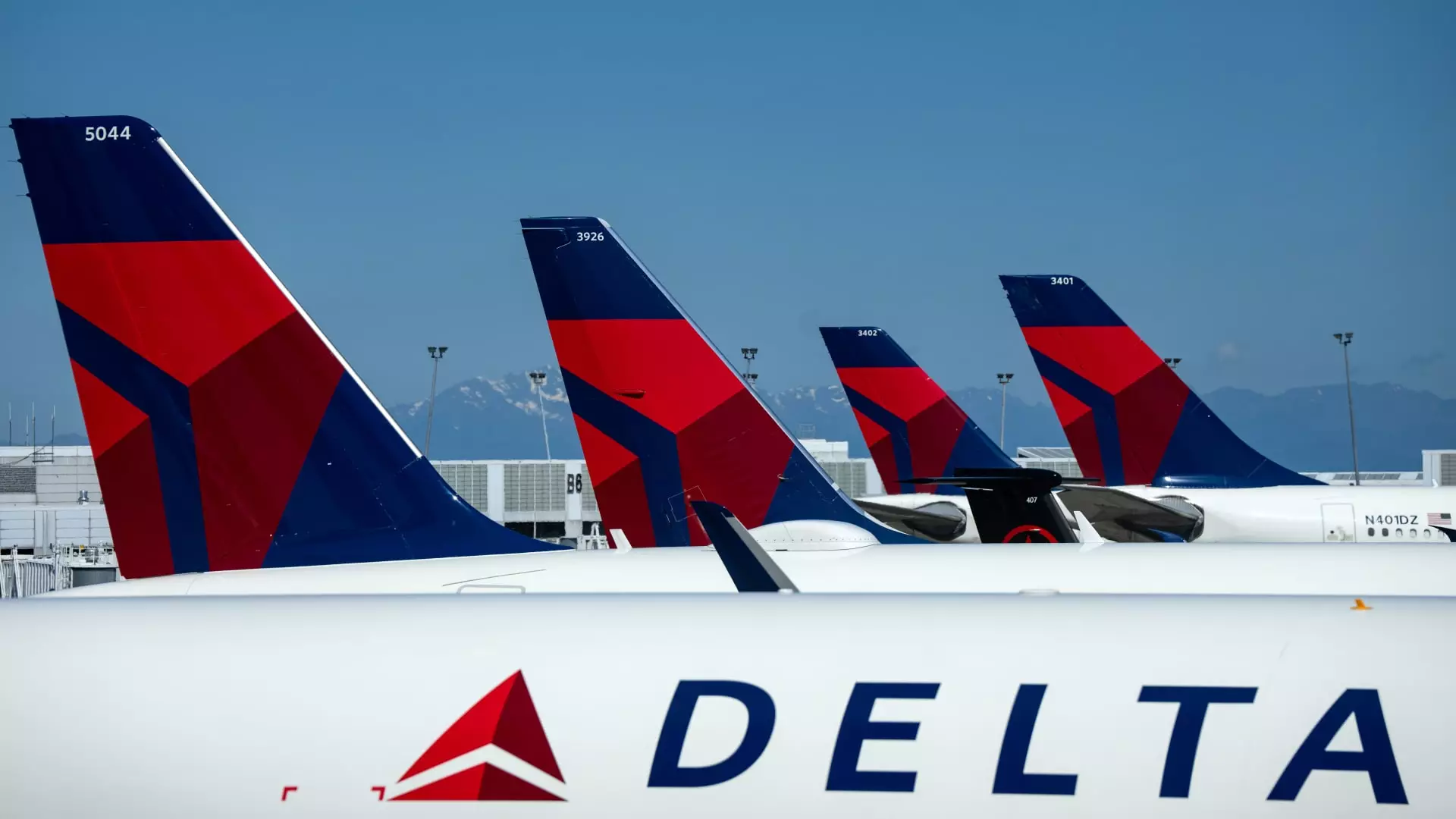As the summer season draws to a close, airlines across the board are unveiling improved unit revenues, signaling a potential new chapter where air travel becomes an increasingly expensive proposition for consumers. Key players, such as Alaska Airlines and Delta Air Lines, have adjusted their profit forecasts significantly, projecting better-than-anticipated financial performance due to factors both external and internal. Airlines appear to be capitalizing on rising demand and strategically navigating challenges from recent technological disruptions that have impacted industry operations.
On Thursday, Alaska Airlines made headlines by revising its third-quarter earnings forecast dramatically from a previous ceiling of $1.60 per share to a new range of $2.15 to $2.25. This upward revision is not solely attributed to increased passenger numbers; it reflects a notable shift in unit revenue expectations as well. The airline anticipates a growth of up to 2% in unit revenue, a revision from earlier expectations which floated around flat performance. This optimism, particularly riding the wave of disturbances caused by the CrowdStrike outage earlier in the summer, demonstrates how external factors can inadvertently bolster a competitor’s revenue stream.
Conversely, Delta Air Lines has acknowledged that its performance will be less robust than initially anticipated due to the CrowdStrike incident. Despite projections of an increase in domestic and trans-Atlantic unit revenue in September, they now predict growth to be capped at 1%. Delta’s president, Glen Hauenstein, has indicated that the airline seeks to minimize the long-term fallout from operational disruptions that led to a staggering 7,000 flight cancellations. The $500 million impact due to the outage suggests that even industry giants are not immune from the unpredictable nature of operational hiccups.
The airline industry has been grappling with a peculiar juxtaposition of operational challenges and surging demand. The recently released U.S. inflation report outlined a concerning trend: the airfare price index saw a 3.9% surge in August following a five-month period of declining prices. This rebound in airfare suggests that airlines may finally be gaining the upper hand in terms of pricing power—a crucial element in turning around profit margins that had been eroded by aggressive fare competition and unique conditions in late 2022.
In the face of evolving passenger expectations, airlines are revamping their service offerings to attract a higher-spending clientele. United Airlines’ CFO, Mike Leskinen, emphasized at a recent conference the commitment to bridging the competitive gap through enhancements in premium services such as improved in-flight dining and more robust loyalty programs. This shift reflects a strategic pivot aimed at elevating the travel experience while catering to the growing appetite among consumers who are willing to pay more for superior service.
Capacity Management and Hiring Constraints
As airlines recalibrate their operational frameworks, they are also facing challenges related to staffing and aircraft availability. Sluggish delivery timelines from major manufacturers like Boeing and Airbus have forced many U.S. airlines to halt hiring or even refine their existing workforce structures. With limited fleet expansions in sight and demand beginning to temper after a significant hiring surge, airlines are caught in a balancing act between offering enough capacity to meet the demand while ensuring operational efficiency.
Overall, the airline industry is at a significant crossroads characterized by improving unit revenues and evolving consumer expectations. While certain airlines, like Alaska, enjoy the benefits of strategic positioning in response to external challenges, others like Delta face hurdles that threaten to curtail their growth trajectory. As consumer demand continues to sway and travel prices rise, the industry must remain agile, balancing operational capabilities with consumer desires in a landscape that appears ripe for change. How airlines navigate this shifting terrain will determine their success in the coming months, illustrating the complexity of an industry shaped by myriad external pressures and competitive dynamics.


Leave a Reply